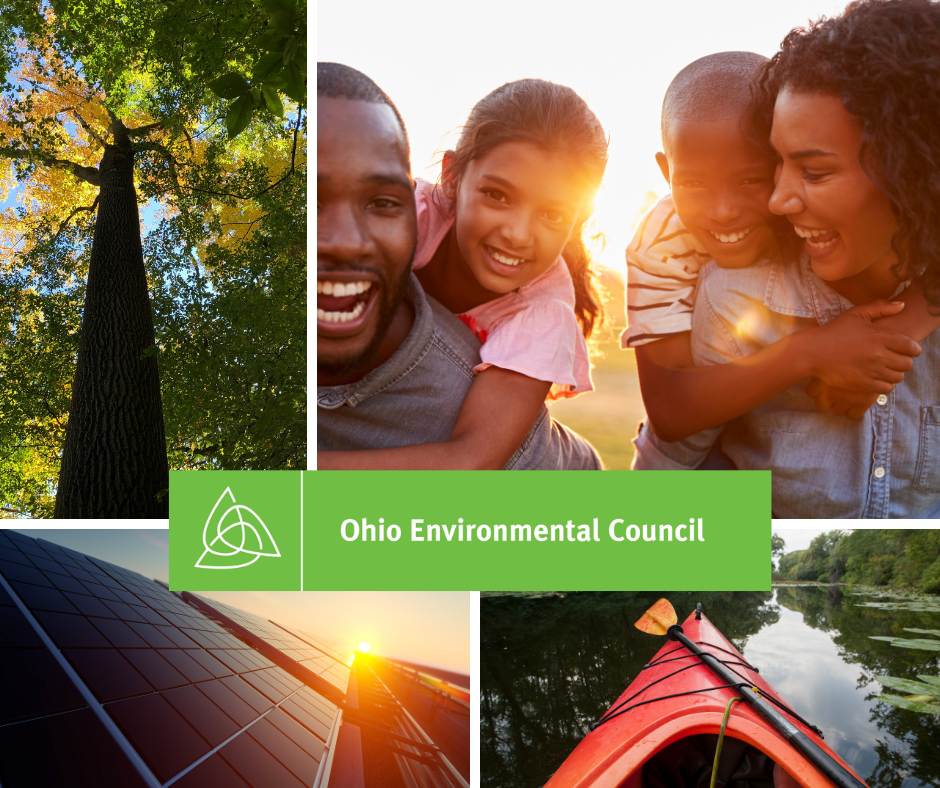Tagged In: Clean Water, Drinking water, H2Ohio, toxic algae, Water Pollution
Ohio Environmental Council, March 30, 2021
From our Great Lake to the mighty Ohio River—and the many lakes, ponds, and streams in between—Ohio’s plentiful water resources provide drinking water, recreation opportunities, and a strong economy for millions of people. Since OEC’s founding more than 50 years ago, supporters like you have been critical in our fight to protect and improve water quality for all Ohioans.
OEC and our members played an important part in the launch of H2Ohio. This program is a comprehensive and science-based effort designed to improve Ohio’s water quality from source to tap. H2Ohio specifically focuses on reducing phosphorus, creating wetlands, addressing failing septic systems, and preventing lead contamination.
Each summer, we monitor reports of harmful algal blooms endangering waterways across the state in which we fish, boat, swim, and source our drinking water. Nutrient runoff from farms plays a key role in the development of toxic algae in the western Lake Erie basin and water bodies across Ohio.
H2Ohio has invested substantial resources to encourage adoption of ten of the most effective and cost-efficient practices to reduce agricultural phosphorus runoff. Starting in the Maumee watershed in Northwest Ohio, H2Ohio and the Ohio Department of Agriculture provide incentives to farmers who develop a nutrient management plan. These plans utilize soil testing data to guide farmers to best practices for their land. The Ohio Agricultural Conservation Initiative (OACI)—supported by the OEC and our academic, conservation, and agricultural partners—has also played a key role. OACI created a widely supported farmer certification program and a best management practice program to promote conservation practices. Nearly 2,000 farmers enrolled in the H2Ohio and OACI programs in their first year.
Wetland creation is another key approach to combating harmful algal blooms across the Buckeye State. Wetlands have been called “nature’s kidneys” because of their ability to filter sediments and excess nutrients. Our wetlands stop phosphorus and nitrogen from getting into our lakes and rivers. Wetlands slow the flow of water, absorb that water, and remove nutrients that water may be carrying. Under the leadership of the Ohio Department of Natural Resources, the H2Ohio wetland program is focused on building and restoring wetland habitat primarily in the Maumee watershed in Northwest Ohio. Additional projects have started around the state, including one near Chippewa Lake, the state’s largest glacial lake, in Northeast Ohio.
H2Ohio also funds water and wastewater infrastructure improvements, including reducing the risk of lead exposure in high-risk daycare centers and schools. Ohio is believed to be second highest in the nation for lead water lines. That means there are an estimated 650,000 lead service lines carrying water to families’ homes. This legacy of lead in our drinking water delivery system is a big challenge. Health experts agree: no amount of lead is safe. Exposure to lead, even at low levels, can cause serious health effects in all age groups but especially our children.
Through H2Ohio, the Ohio Environmental Protection Agency has awarded a total of $725,000 in funding to the City of Cincinnati for the removal and replacement of lead service lines at approximately 185 childcare facilities in the city.
We must take an all-of-the-above approach to secure clean, safe, and affordable water for all Ohioans. H2Ohio is a major investment in that approach. To learn more about the H2Ohio program, please visit http://h2.ohio.gov/.
